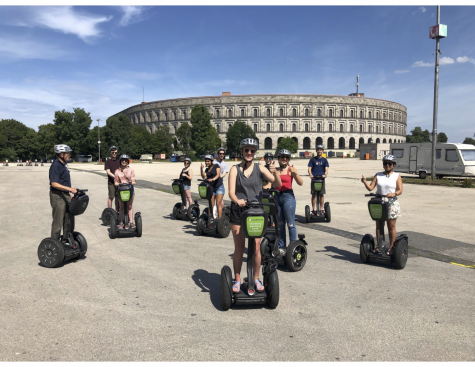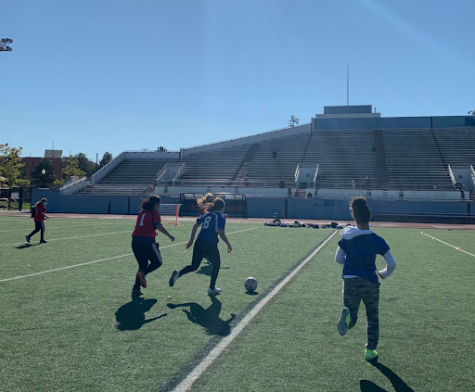International students face extra challenges with online classes
July 6, 2020
Most college students across the U.S. experienced some form of virtual learning this year due to the coronavirus pandemic. International students who returned home after dorms closed faced an additional set of problems, and the time difference was just one of them.
“The biggest thing was that a lot of my classes required group work, which meant I had to stay up till like 4:30 a.m. in the morning, which was tough, but it wasn’t a weekly thing,” said Shaynan Vinayak, a junior at Boston University, interviewed through email, as were the other people who are quoted. He is currently in Singapore which is 12 hours ahead of Boston.
Due to the risk of infection from travel, many international students returning home had to go through a period of quarantine upon arrival in their home countries. Valentina Daiha, a sophomore at Wellesley College, was quarantined for 21 days in a hotel room in Brazil, during which she still had to attend classes. While she was only required to stay for 14 days, she chose to stay for longer so she could be tested before returning home, where she lived with her grandparents.
“The whole situation left me super stressed and overwhelmed when I started taking the spring online classes,” she said. “Moreover, my internet access was much poorer than in the U.S., and I barely had enough data to do everything online until I came back home.”

Considering the abrupt switch from in-person to online classes in March, the students expected glitches and errors.
“Generally, most of my classes executed the change between in-person to virtual fairly well,” said Vinayak. “But there was one class that was very disorganized, and in a time like this, the professors of a course need to be even more ahead of the game when it comes to lesson plans, exam planning, and other aspects.”
When the spring semester ended, many universities asked for feedback from students with the hope of bettering the system that would be used for summer classes as well. During the summer semester, Daiha said she had a better experience, although it partly had to do with her course choices, and not just the system.
“As now I am taking Calculus I, and it’s a completely stem-based course, the classes don’t require as much discussion as the others did,” she said. “Even so, my professor does a very good job [at] creating a community space and dividing us frequently into small groups to get to know each other and talk about math problems. He’s also super techy and [is] totally prepared for the online environment, writing things on an iPad as the class continues, while looking at his students and engaging with us.”
However, not all complaints made after the spring semester were resolved.
“In fact, one of my summer courses was even more disorganized because the professor wouldn’t provide us [with] enough information, and we did not receive any feedback or grades on our assignments,” said Vinayak, who didn’t know his midterm grades the day before his statistics final.
For most universities across the U.S., online learning will be a cornerstone of the upcoming fall semester. Students will have to wait and see whether courses will be better adapted to the format by then.
“I would slow down with the course load a bit, maybe spacing out the content throughout more weeks,” said Daiha. “I would also prefer that we could choose what time we’re going to watch some class, even if it means that I am not going to have live contact with the professor.”
The students interviewed felt that approaching online education in the same way as in-person education is unproductive.
“I would have the coordinators in my courses come up with clear, altered guidelines that are easily achievable,” said Vinayak. “We cannot continue with the hopes of achieving everything in a normal semester because that is unreasonable.”
Boston University, Wellesley College, and Northeastern University will all be offering a combination of in-person and online classes this fall, with the option of completing the semester online. Considering the additional struggles international students face with online learning, they will face a tougher choice of whether or not to return to their universities.
“I am actually going back because I believe that working from home is challenging and prevents me from achieving my best academically and personally,” said Vinayak.
Some students may be more worried about a good classroom experience than getting the coronavirus.
“An interactive classroom environment and going to campus to study and a virtual class that you can probably take from your bed cannot provide you [with] the same level of motivation,” said Deepanshu Parihar, a second-year graduate student at Northeastern University.
The students interviewed agreed that, no matter what changes are made, online classes will never be able to match up to their live counterparts.
“Virtual learning is a good substitute when you miss a class due to unforeseen circumstances and do not want to miss out on things being taught. Then it is helpful,” said Parihar. “But for a regular class, it makes no sense. If I had to take a virtual class, I would do one of the many good [Massive Open Online Courses] platforms out there. There is no way to replace human physical presence.”











